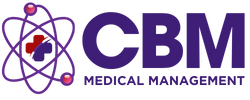A Simplified Guide to Aetna Credentialing for Healthcare Providers
Navigating the waters of insurance credentialing can often seem daunting for healthcare providers. With over 40 years of experience in Revenue Cycle Management and Practice Start-Up, CBM Medical Management is here to simplify it. Whether you’re embarking on a new journey in healthcare or aiming to streamline your practice’s processes, understanding the Aetna credentialing process is essential. Let’s dive into making this process more accessible and less of a hassle for you.
What Is Credentialing?
Before we jump into the specifics of Aetna’s credentialing process, let’s understand what credentialing is. In the healthcare sector, credentialing is the verification of a practitioner’s qualifications to ensure they can provide care to patients. This involves vetting their education, training, residency, licenses, certifications, and any other relevant credentials.
The Significance of Aetna Credentialing
Aetna is one of the leading insurance providers in the United States, and being credentialed by Aetna means you are recognized as a healthcare provider within their network. This not only expands your potential patient base but also streamlines payment processes for the services you provide.
Step-by-Step Guide to Aetna Credentialing
Ready to get started? Here’s a simplified guide to help you navigate the Aetna credentialing process:
- Understand Aetna’s Requirements: Each insurance company has its specific requirements. Familiarize yourself with Aetna’s to ensure a smoother process.
- Prepare Your Documents: Gather all necessary documents such as your CV, medical license, DEA certificate, board certification, malpractice insurance certificate, and any other relevant certifications.
- Online Application: The Aetna credentialing process is initiated through an online application via the Aetna provider website. Ensure all your information is accurate and complete.
- CAQH Registration: Aetna uses the Council for Affordable Quality Healthcare (CAQH) ProView database for credentialing. If you’re not already registered, you’ll need to do so. Keep your CAQH profile up to date.
- Verification and Review: After submission, Aetna will verify the information provided. Follow up on any additional documentation that may be requested.
- Contracting: Once your credentialing is approved, the next step is contract negotiation. This will detail your reimbursement rates for various services.
- Finalization: Upon agreeing to the contract, you’re now credentialed with Aetna and can begin accepting patients under their plans.
Remember, the credentialing process can take some time, typically 90 to 120 days. Patience and timely response to any queries can significantly smooth the path.
Why Reach Out for Help?
Navigating the credentialing process might seem straightforward at first glance, but it can quickly become overwhelming. This is where having an experienced partner like credentialing services from CBM Medical Management becomes invaluable. With their support, you can ensure that all steps are handled with professionalism and attention to detail, freeing you to focus on what you do best—caring for your patients.
Remember, being credentialed is not a one-time task but a continuous process of keeping your documents updated and renewing your credentials as needed. With the right support, this essential step can become a seamless part of your professional practice, ensuring your services reach a wider audience and are acknowledged for their quality and reliability.
Embracing the journey of credentialing with Aetna opens up a world of opportunities for healthcare providers. With the right approach and expert guidance, the process can be less daunting and more of a strategic step toward expanding your practice’s reach and impact.


